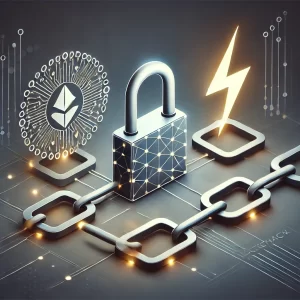 Introduction
Introduction
Cryptocurrencies rely on three key technologies – Cryptography, Blockchain, and Electricity. While cryptography has roots in ancient times, blockchain and the reliance on electricity are newer aspects of crypto. Together, they make crypto networks secure, transparent, and independent, yet dependent on continuous power. This article focuses on blockchain, using Bitcoin as an example.
What is Blockchain?
Blockchain is a secure way to store data. It was created in the 1990s to timestamp documents so no one could alter them. This made the system tamper-proof and useful for various applications.
Bitcoin and Blockchain
Bitcoin’s creator, Satoshi Nakamoto, used blockchain to track transactions. It records ownership, timestamps, and coin amounts in a secure, unchangeable way. This makes Bitcoin a “store of value” like gold.
How Blockchain Works
Imagine blockchain as a series of boxes, or “blocks,” filled with transactions. Once a block is full, it’s locked and linked to the previous block, forming a chain. Each block contains around 1,700-2,000 transactions, representing Bitcoin moving between buyers and sellers.
Miners, who use special computers, compete to seal blocks by solving complex problems. The winner earns six new bitcoins. This process keeps Bitcoin running and secure. However, becoming a miner requires expensive equipment, expertise, and significant electricity to power the machines.
Role of Miners
Miners are essential to Bitcoin. Around one million miners worldwide compete to seal blocks and verify transactions, ensuring no one spends the same coin twice. This process uses a lot of computing power and electricity. The difficulty increases as more blocks are added, making mining progressively harder.
Key Elements of Cryptocurrency
Cryptocurrencies differ from traditional money in a few key ways:
-
- Decentralized – No central authority controls crypto. It exists solely on the internet, supported by millions of users worldwide.
-
- Electricity-Driven – Crypto relies heavily on electricity. Without power, accessing or validating transactions becomes impossible. This reliance makes it vulnerable to power disruptions but reflects the digital nature of cryptocurrencies.
-
- Secure but Complex – Cryptography makes crypto highly secure, but losing your password means losing access to your coins. Unlike banks, there’s no way to recover forgotten passwords.
Security and Transparency
The blockchain is public, allowing anyone to see transactions. However, user identities are hidden behind computer-generated addresses. Your private key connects to your public address, and wallets protect this information with strict security.
Challenges and Risks
Crypto is transparent but complex. Since there’s no central authority, managing passwords carefully is crucial. Power outages can limit access, but this risk applies to traditional money as well.
Conclusion
Blockchain and cryptography make crypto unique but challenging. Understanding how they work is essential. Keep exploring – the world of crypto is vast, and there’s always more to learn!




